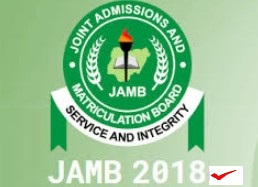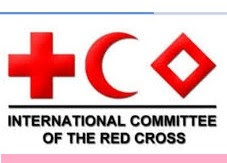Jamb 2021/2022 Questions and Answers / Regular Economics Questions – The relevance of this is in your understanding the pattern of JAMB past questions and answers on economics, JAMB syllabus for economics 2021/2022, English JAMB question, JAMB economics question 2021/2022, JAMB past question on economics 2021/2022, WAEC past questions and answers on economics and JAMB government question.
As a matter of facts, Exam questions have trends, and that is what I want you to discover today. Understanding this trend will make you an undergraduate in the university of your choice by September, 2022.
This is a painstaking tracking of trends that will help you pass your exams at once.
JAMB 2021/2022 QUESTIONS AND ANSWERS/ REGULAR ECONOMICS QUESTIONS
Table of Contents
TRENDING QUESTIONS
1. The price of a good rises from N5 to N8 and the quantity demanded falls from 200 to 190 units. Over this price range, the demand curve is
A. fairly inelastic
B. fairly elastic
C. perfectly inelastic
D. perfectly elastic
2. In economics analysis, a statement is said to be normalize if, it
A. can be tested scientifically
B. relates to value judgment
C. is contradictory
D. is incorrect
3. Utility is the satisfaction derived from
A. production
B. distribution
C. consumption
D. demand
4. If there is an increase in demand without a corresponding increase in supply, there will be
A. fall in price
B. rise in price
C. shift in supply curve to the right
D. shift in demand curve to the left
Use the production possibility curve of a country represented in the diagram below to answer questions 5 and 6
5. An improvement in technology will enable the country to produce at
A. V B. W C. X D. Z
6. If the country is currently producing at point Y, it can increase production of producer goods by moving to the point
A. v
B. W
C. X
D. Z

JAMB 2021/2022 QUESTIONS AND ANSWERS/ REGULAR ECONOMICS QUESTIONS
7. In the table above, the price of commodity y is N2 and that of x is N1 while the individual has an income of N12. Determine the combination of the two commodities the individual should consume to maximize his utility.
A 3y and 3x
B. 6y and 4x
C. 3y and 6x
D. 5y and 5x
8. When two variables are positively related, the graph of the relationship
A. is a straight line
B. is a downward-sloping curve
C. is an upward sloping curve
D. has a negative intercept
9. For an inferior good, a decrease in real income lead to
A. an outward shift of the demand curve
B. an inward shift of the demand curve
C a lowed equilibrium price
D. a change in quantity demanded
10. In a planned economy the emphasis is on
A. individual choice and decisions
B. public ownership and control
C. private ownership and control
D. prices and competition
11. Price elasticity of supply is a ratio of the change in
A. quantity supplied to the c change in demand
B. original quantity to a change in new quantity
C. quantity supplied to the change in price
D. price to the change in quantity supplied.
12. The long-run average cost curve is called a planning curve because it shows what happens to costs when.
A. variable inputs are increased
B. fixed factors are increased
C. different sizes of plants are built
D. a bigger size of plants is built
13. Imperfect market is characterized by
A. many buyers and few sellers
B. a large number of buyers and sellers
C. non-preferential treatment
D. perfect mobility of factors of production
14. Short-run period in production is a period for a firm to be able to change its
A. variable inputs
B. total outputs
C. total revenue
D. scale of operation
Use the table below to answer questions 15 and 16
Output fixed cost Total cost
20 60 100
30 60 120
40 60 130
50 60 135
60 60 150
70 60 170
80 60 190
15. The ATC at 30 units of output is
A. 120.000
B.N60.00
C.N40.00
D.N3.00
16. At 60 units of output, the AVC is
A. N150.00
B. N90.00
C.N2.50
D.N1.50
17. If the demand curve facing a frim is sharply downward sloping, the firm is likely to be
A. a perfect competitor
B. a monopolistic competitor as it can have a limited influence as it can have a limited influence on price
C. an oligopolist as it can collude with other firms to have some influence on price
18. A normal supply curve is usually positively sloped
A. because the relationship between
B. supply and price is negative
C. price and demand is negative
D. price and supply is positive
19. The best method of production in an under-populated country is
A. labour-extensive
B. land-intensive
C. capital-intensive
D. labour-intensive
20. Insurance companies, pension and provident funds and unit trusts are all examples of
A government financial agencies
B. non-governmental organizations
C. non-bank financial institutions
D. rural-based revenue mobilisers
21. For a firm, value added can be defined as the difference between the
A. value of its output and the cost of production
B. total revenue and total cost
C. input prices and product prices
D. value of its output and inputs purchased from other firms
22. Securities are described as listed when they are:
A. bought and sold purely for development purposes
B. mobilized as short-term debt instruments
C. Mobilized as long-term debt instrument
D. Traded on a recognized stock market
23. The commercial banks differ from non-bank financial institutions because they
A. accept deposits withdrawable by cheque
B. mobilize savings
C. invest surplus plus
D. contribute to economic development
24. Inflation that is usually associated with periods of trade boom is
A. cost-push inflation
B. demand-pull inflation
C. creeping inflation
D. stagnation
25. The term “Near Money” is best described as
A. a financial assets that is convertible to cash
B. a financial instrument that is readily convertible to cash
C. government financial instrument that is convertible to cash
D. time deposits with low interest rates
26. The distinguishing characteristic between the money market and the capital market lies in whether the
A. finds mobilized are private or public
B. securities are primary or secondary
C. debt instruments provided are long-term or short-term
D. securities are in debentures of ordinary shares.
27. If Nigeria’s composite price index in 1999 was 140.03% and 144.05% in 2000, the rate of inflation in 2000 was
A. 4.02% B. 2.10% C. 2.06% D. 1.03%
28. The monetary control instrument most effectively used by the Central Bank of Nigeria is the
A. discount rate
B. reserve ration
C. margin requirements
D. open market operations
29. The major objectives of a revenue allocation formula in a country is to
A. share revenue between the public and private sectors
B. ensure the financial viability of the country
C. share revenue between the different tiers of government
D. divert revenue from areas of surplus to areas of need
30. The effectiveness of devaluation as a solution to a balance of payments problems depends on the
A. relative elasticity of demand
B. foreign investments of business
C. value of visible and invisible goods
D. value of invisible items of both domestic and foreign trades
31. IBRD as an international monetary institution is concerned with the
A. balance of payments problems of member nations
B. financing of private business in member nations
C. development of infrastructure in member nations
D. improvement of trade among member nation
32. An advantage of the sole proprietorship over the partnership form of business organization is that
A. it enjoys limited liability for debt in the event of failure
B. Its existence is limited bty an individual’s life span
C. It relies on the decision of friends to succeed
D. The possibility of conflict is management in virtually non-existent
33. The distinction between capital and recurrent expenditure lies in the
A. amount of expenditure involved
B. source of the revenue generated
C. nature of the goods and services to be provided
D. time frame of the expenditure
34. Under a floating exchange rate regime, the determinant of the exchange rate is
A. the system of government
B. demand for and supply of foreign goods
C. the highest denomination of the currency an act of the national assembly
35. To compare the standard of living among nations, the most widely used economic indicator is the
A. per capital nominal income
B. real domestic output
C. real gross national income
D. real per capital income
JAMB 2021/2022 QUESTIONS AND ANSWERS/ REGULAR ECONOMICS QUESTIONS
36. Statutory organisations usually established by Acts of parliament are called
A. public enterprises
B. public corporations
C. cooperative societies
D. joint-stock companies
37. A greater burden of the taxes on essential goods is borne by the
A. higher income group
B. newly recruitment workers
C. lower income group
D. contract workers
38. Privatization and commercialization of public enterprises in Nigeria is necessitated by
A. the IMF conditions
B. the IBRD conditions
C. the government’s loss of interest in them
D. their operational inefficiency
39. The theory of comparative advantage states that a commodity should be produced in that nation where the
A. absolute cost is least
B. absolute money cost is least
C. opportunity cost is least
D. production possibility curve increases
40. The effect of an increase in the personal income tax is to
A. raises the absolute price level
B. distort the economy
C. reduce unemployment
D. reduce the disposable income
41. An important factor hindering the rapid development of the industrial sector in Nigeria.
A. excessive demand for finished products
B. the dominance of the oil sector
C. rural-urban migration
D. inadequate infrastructure facilities
42. The demand for labour is an example of
A. competitive demand
B. derived demand
C. composite demand
D. joint demand
43. The major role of multi-national companies in the petroleum industry in Nigeria is
A. oil prospecting only
B. oil marketing only
C. the establishment of refineries
D. oil marketing prospecting
44. Fixing the prices of agricultural products can be a problem because of the
A. unpredictable output of farmers
B. instability of government policies
C. activities of marketing boards
D. size of agricultural exports
45. Occupational mobility as applied to factors of production means the case by which
A. factors can be transferred from one place to another
B. factors can be transferred from one form move use to another
C. resources can be transferred from one place to another
D. resources can be transformed from one form to another
46. The labour force of a country can be determine by xamining the
A. Sex distribution of the population
B. Occupations distribution of the population
C. age structure of the population
D. geographical distribution of the population
47. Two basis features common to an industry are
A. similarity of products and production processes
B. similarity of products and source of raw materials
C. production processes and source of capital
D. source of capital and labour supply
48. A country is said to be over populated when
A. there are too many able-bodied men and women in the country
B. the resources are more than enough to cater for the population
C. the size of the population is greater than the annual budget
D. the resources are inadequate to cater for the population
49. When a union is composed of workers with same
skill, it is called
A. an industrial union
B. a workers’ union
C. a craft iunion
D. a technical union
50. An adverse environmental impact of the petroleum industry on the economy is
A. the vernalisation of oil equipment
B. oil spillage
C. communal riots
If you need more i formation visit here: www.jamb.gov.ng/home.aspx
A regular visit to this website will make you an undergraduate very soon. You know how? I tell you; from this sit you will get all the trending JAMB, WAEC and NECO questions. From this site you will get your expo questions and answers.
That is why I think your regular visit to this website will enable you become an undergraduate sooner.
Good luck.

Deacon Anekperechi Nworgu, a seasoned economist who transitioned into a chartered accountant, auditor, tax practitioner, and business consultant, brings with him a wealth of industry expertise spanning over 37 years.



